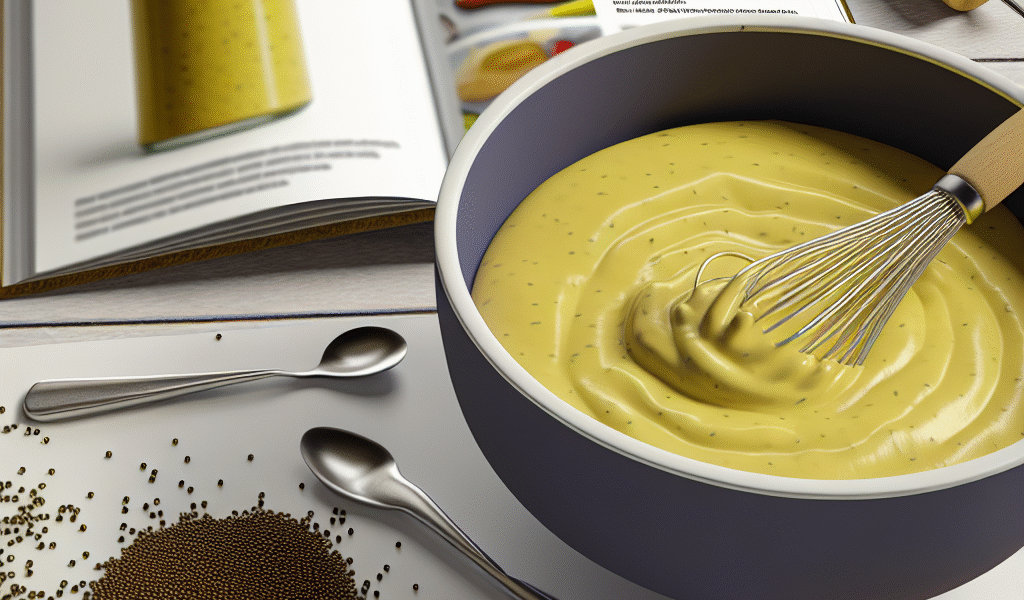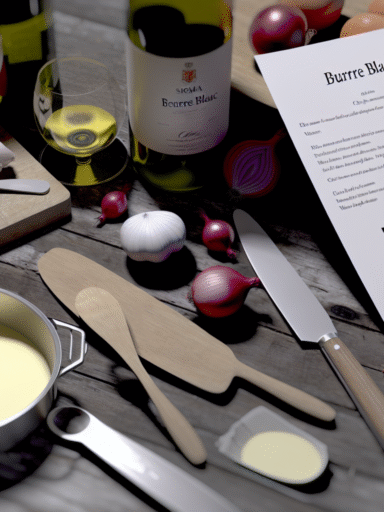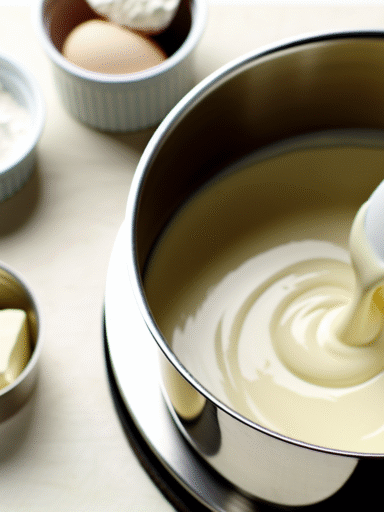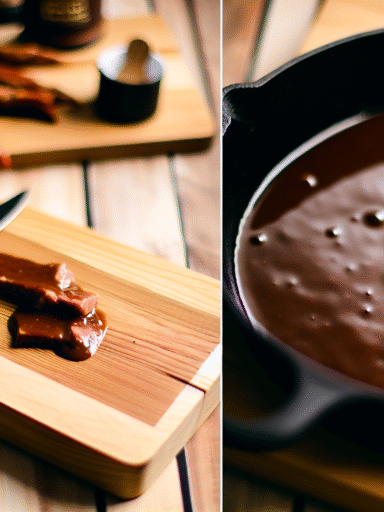Mustard Sauce
If you’ve ever wondered how to elevate simple dishes with a punch of tangy, creamy goodness, mustard sauce is your new best friend. It’s versatile, straightforward, and brings a bright zing that complements everything from roasted meats to steamed veggies. Let’s dive into making this classic sauce that’s perfect for lifting your meals with minimal effort.
Tags / Categories
- Flavor Profile: Tangy, creamy, slightly spicy
- Main Ingredients: Mustard, cream, vinegar
- Region: European, French-inspired
- Usage: Condiment, dipping sauce, accompaniment for meats and vegetables
Quick Info
- Prep Time: 5 minutes
- Cook Time: 5 minutes
- Total Time: 10 minutes
- Difficulty Level: Easy
- Yield: About 1 cup (240 ml)
Ingredients
- ½ cup Dijon mustard (smooth or grainy depending on preference)
- ½ cup heavy cream
- 1 tablespoon white wine vinegar or apple cider vinegar
- 1 teaspoon honey (optional, for a hint of sweetness)
- 1 teaspoon olive oil or unsalted butter
- Salt to taste
- Freshly ground black pepper, to taste
- Optional: 1 small garlic clove, minced (for an extra punch)
How to Make Mustard Sauce: Step-by-Step
- Warm the fat: In a small saucepan, gently heat the olive oil or butter over medium-low heat. If you decided to add garlic, toss it in now and let it soften for about 30 seconds—don’t let it brown, or it’ll get bitter.
- Add mustard and cream: Stir in the Dijon mustard and heavy cream. Your kitchen will smell amazing right about now, with that tangy, creamy aroma filling the air.
- Mix in vinegar and honey: Pour in the vinegar and honey, if using. Stir continuously as the sauce gently heats through; the sauce will start to thicken in about 3-5 minutes. Keep it on medium-low heat to avoid curdling.
- Season it: Taste and season with salt and freshly ground black pepper. Don’t stress if it’s a little chunky—that texture adds character! If you want a silkier sauce, just whisk it a bit more.
- Finish and serve: When the sauce has thickened to your liking, remove from heat and use immediately, or keep warm until you’re ready to serve.
Serving Suggestions
This mustard sauce is a true multitasker. Here are some ways to enjoy it:
- Drizzle over grilled or roasted chicken and pork for a savory kick.
- Mix into boiled or steamed vegetables like green beans or asparagus.
- Use as a dipping sauce for crispy fries or roasted potatoes.
- Stir through warm grain bowls or drizzle on roasted salmon fillets.
- Spread on sandwiches or burgers for an extra layer of flavor.
A Little History and Background
Mustard sauce traces its roots back to European cooking, particularly French cuisine, where mustard has been cherished for centuries. The French love a creamy mustard sauce to accompany meats like pork and veal—something about that slight tang paired with the richness of cream creates a perfect balance. It’s one of those sauces where simple ingredients come together to multiply flavor, embodying the ‘less is more’ culinary philosophy. Fun fact: mustard seeds were valued as far back as ancient Rome and have remained a kitchen staple worldwide!
Variations and Substitutions
There are countless ways to tweak this sauce based on your pantry and dietary needs:
- For a lighter version: Use Greek yogurt or sour cream instead of heavy cream.
- Make it vegan: Swap cream for coconut cream or a plant-based milk thickened with a bit of cornstarch.
- Kick up the heat: Add a pinch of cayenne pepper or a dash of hot sauce.
- Herbal twist: Stir in fresh tarragon, chives, or parsley for a fresh, herbal note.
- Grainy vs. smooth: Experiment with whole grain mustard for texture or smooth Dijon for a silkier mouthfeel.
Storage and Make-Ahead Tips
If you have leftovers (lucky you!), store the sauce in an airtight container and refrigerate. It will keep well for up to 5 days. When reheating, warm gently in a saucepan over low heat—avoid boiling, as the cream can separate. This sauce isn’t the best candidate for freezing because the texture may change, but if you must, thaw slowly and whisk well before serving.
Nutritional Information (per 2-tablespoon serving)
- Calories: ~80 kcal
- Fat: 7 g
- Carbohydrates: 2 g
- Protein: 1 g
- Sodium: 150 mg (varies based on mustard used)
Related Sauces / Try Next
- Honey Mustard Sauce – A sweeter, more playful sibling in mustard’s sauce family.
- Dijon Cream Sauce – Lean into the creamy aspect with wine and shallots.
- Whole Grain Mustard Vinaigrette – Light and zesty for salads and grilled veggies.
FAQ
Q: Can I use yellow mustard instead of Dijon for this sauce?
A: You can, but yellow mustard is milder and less tangy, so the sauce will be less sharp and more muted in flavor. If that’s your preference, go for it!
Q: My sauce looks grainy or separated after cooling—what happened?
A: Mustard sauce can separate if heated too quickly or boiled. Next time, warm it gently and avoid high heat. Whisking during the process helps maintain a smooth texture.
Q: Is mustard sauce only good for meats?
A: Not at all! It’s fantastic on veggies, as a dip, or even spread on sandwiches. It’s a great way to add oomph to a wide variety of dishes.
There you have it—a beautifully simple yet gloriously flavorful mustard sauce recipe that’s sure to become a staple in your kitchen. Whether you’re spicing up weeknight dinners or hosting a special meal, this sauce fits right in. So grab your whisk, and let’s make mustard magic happen!



